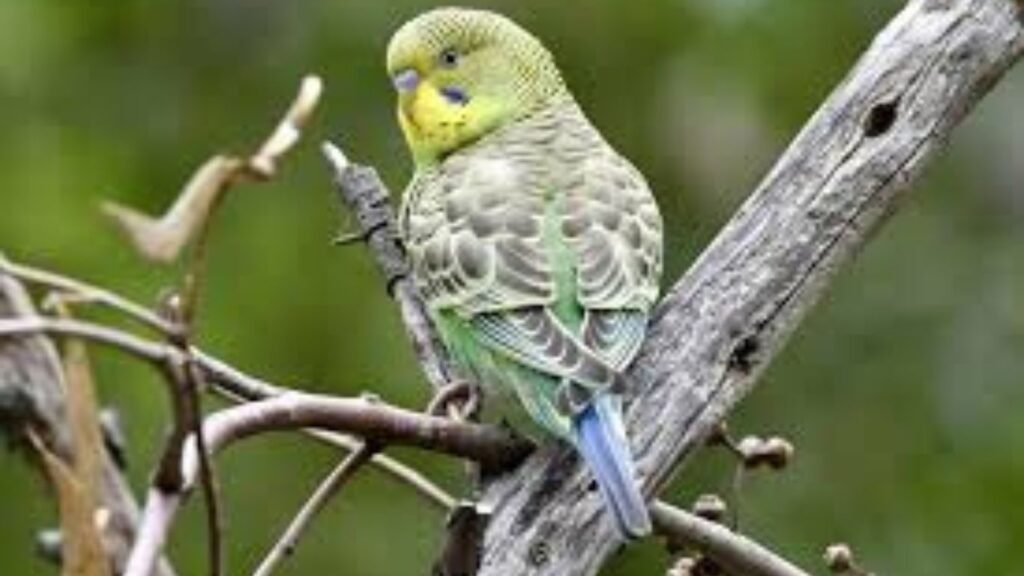Budgerigars, often called budgies or parakeets, are popular pet birds known for their colorful plumage and friendly personalities. These small Australian parrots can make wonderful companions, and some bird enthusiasts enjoy breeding them. Budgerigar Bird Breeding budgies require careful planning and attention to detail.
The best time to breed budgies is typically between October and March, which aligns with their natural breeding season. During this period, budgies are more likely to be in the mood to mate. Providing the right conditions, including proper nutrition, adequate lighting, and a suitable nesting box, can help encourage successful breeding.
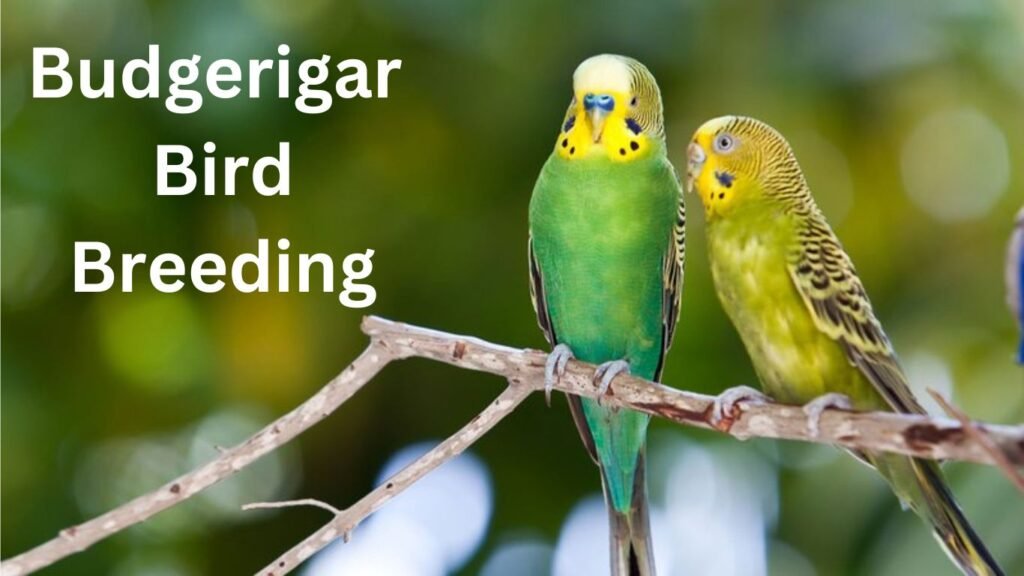
Breeding budgies can be a rewarding experience, but it’s important to be prepared for the responsibilities that come with raising chicks. New breeders should research proper care techniques and have the time and resources to dedicate to the process. With patience and the right setup, breeding budgies can be an enjoyable and educational hobby for bird lovers.
Table of Contents
ToggleUnderstanding Budgerigars
Budgerigars, often called budgies, are small parakeets native to Australia. These colorful birds have become popular pets worldwide due to their friendly nature and ability to mimic human speech. Budgies come in many colors and have distinct behaviors that make them unique.
Species Origin and Description
Budgerigars come from the dry, inland areas of Australia. In the wild, they live in large flocks and fly long distances to find food and water. Adult budgies are about 7 inches long and weigh 1-1.4 ounces. These birds have a small, hooked beak and long tail feathers.
Their bodies are covered in bright feathers that can be green, blue, yellow, or white. Budgies have black markings on their wings, back, and head. Wild budgies are mostly green and yellow. But years of breeding have created many new color varieties in pet budgies.
Behavioral Traits
Budgies are smart and social birds. They love to play and can learn tricks. Many budgies enjoy mirrors and small toys in their cages. These birds are known for their ability to mimic sounds. Some budgies can learn to say words and short phrases. Male budgies tend to be better at talking than females.
Budgies are active during the day. They like to climb, fly, and chew on things. In the wild, they spend a lot of time looking for food. These birds preen their feathers often to stay clean. They also like to take baths in shallow water.
Color Varieties
Pet budgies come in many colors thanks to breeding. Some common colors are:
- Blue
- Yellow
- White
- Green
- Violet
- Gray
There are also pied budgies, which have patches of different colors. Albino budgies are all white with red eyes.
Some rare color mutations include:
- Lutino (yellow body with red eyes)
- Clearwing (body color with clear wings)
- Spangle (each feather has a V-shaped marking)
Breeders often try to create new and unique color patterns. This has led to a wide range of beautiful budgie varieties.
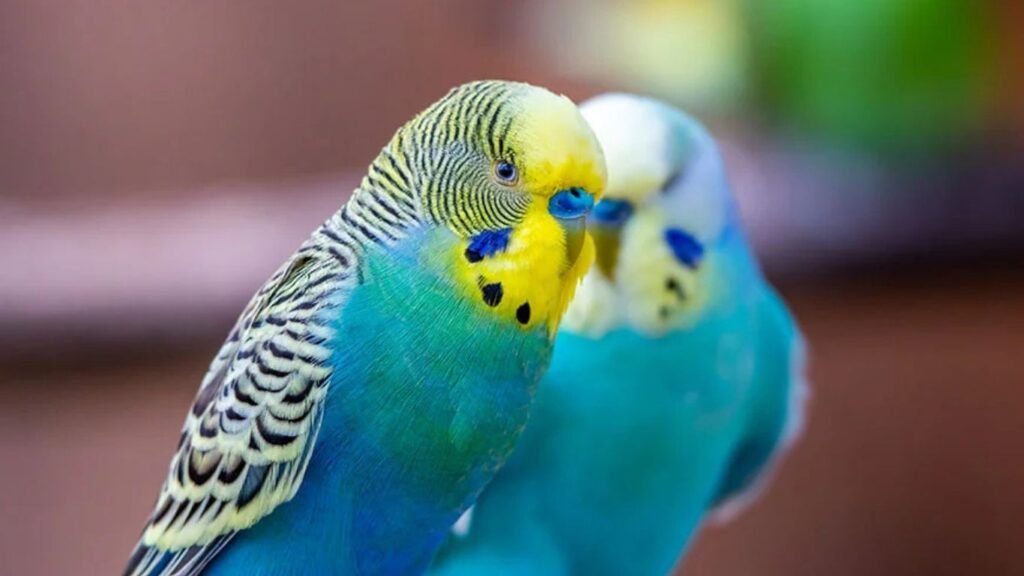
Setting Up for Breeding
Proper setup is key for successful budgerigar breeding. A thoughtful environment, compatible pairs, and suitable nesting spots help ensure healthy chicks.
Creating the Right Environment
Choose a quiet room with good airflow for your breeding budgies. Keep the temperature between 65-75°F (18-24°C). Provide 10-12 hours of light daily using full-spectrum bulbs. Set up a spacious cage at least 24 x 24 x 36 inches. Add perches of different sizes and materials.
Place toys and swings for mental stimulation. Offer a varied diet of seeds, pellets, fresh fruits, and vegetables. Clean food and water dishes daily. Keep the cage clean to prevent illness.
Choosing a Compatible Pair
Select healthy birds over 10 months old. Look for bright eyes, smooth feathers, and active behavior. Avoid birds that are overweight or have signs of illness. Introduce potential pairs in separate cages side by side.
Watch for positive interactions like chattering and preening each other through the bars. Once a pair bonds, move them to the breeding cage together. Give them time to adjust before adding a nest box.
Nesting Requirements
Hang a wooden nest box outside the cage, about 6 inches above a perch. The box should be 12 x 7 x 7 inches with a 2-inch entrance hole. Line the bottom with a thin layer of pine shavings or corn cob bedding. Avoid cedar shavings, which can be harmful.
Place the nest box in a quiet corner of the cage. Some pairs may take a few days to start using it. Provide nesting material like short strips of white paper. Avoid long strings that could tangle around birds’ feet.
Breeding Cycle of Budgerigars
Budgerigars follow a specific breeding cycle. This cycle includes courtship, mating, egglaying, and incubation. Each stage plays a key role in successful breeding.
Courtship and Mating
Male budgies start the courtship process. They bob their heads, chirp, and sing to attract females. Females show interest by preening and moving closer to the males. Once a pair bonds, they spend time together and may feed each other.
Mating happens after the pair bond is strong. The male mounts the female for a few seconds. This process can happen multiple times a day. Budgies often mate in the morning or evening.
Egg Laying Patterns
Birds generally cannot move their eggs because their anatomy doesn’t allow for lifting or carrying objects like eggs. However, some species, such as penguins, may roll their eggs to reposition them in the nest. This limited ability leads most birds to rely on their nesting site for egg safety, making the question, Can birds move their eggs?
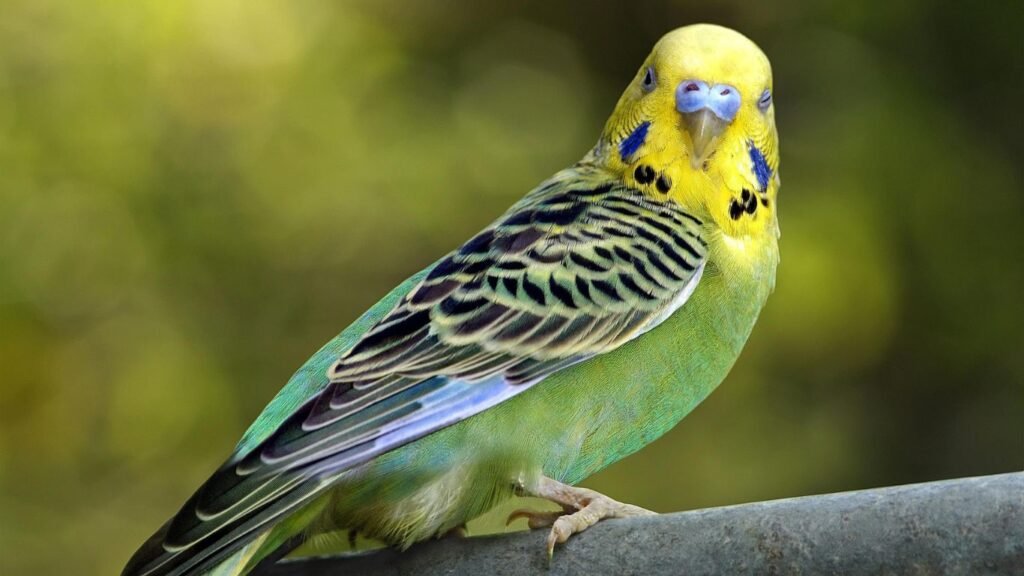
Female budgies lay eggs about 10 days after mating. They usually lay one egg every other day. A typical clutch has 4-6 eggs, but can range from 3-8. Eggs are small, white, and oval-shaped. The female lays them in a nest box or chosen nesting spot. She may start incubating after laying the first egg or wait until she lays the whole clutch.
Incubation Period
Incubation lasts about 18-21 days. The female does most of the incubating. She sits on the eggs to keep them warm and turns them regularly. This helps the chicks develop evenly. Male budgies often feed the female during this time. They may also stand guard near the nest. As hatching nears, the eggs may “pip” or crack slightly.
Chicks use their egg tooth to break out of the shell. Budgie pairs can have multiple clutches per year. In the wild, they often breed after heavy rains when food is plentiful. In captivity, they can breed year-round with proper care and conditions.
Caring for Budgerigar Chicks
Caring for budgerigar chicks requires careful attention and dedication. The first few weeks are crucial for their health and development. Proper care includes providing warmth, nutrition, and a safe environment.
Hatchling Care
Newly hatched budgie chicks are tiny and helpless. They need a warm, quiet nesting box. The temperature should be around 95°F (35°C) for the first week. Gradually lower it as they grow feathers. Keep the nesting area clean. Remove waste daily to prevent infections. Don’t handle the chicks unless necessary.
The mother bird usually cares for them best. Watch for signs of illness like lethargy or swollen crops. Contact a vet if you notice any problems.
Feeding Regimen
For the first 10 days, the mother bird feeds her chicks. She gives them a special food called crop milk. After this, they start eating soft foods.
Offer a mix of:
- Cooked egg yolk
- Soaked seeds
- Commercial hand-feeding formula
Feed chicks every 2-3 hours during the day. Use a small syringe or spoon. Be careful not to overfeed or get food in their airways.
As they grow, introduce solid foods. By 4 weeks, they should start eating on their own.
Growth Milestones
Budgie chicks grow quickly. Here’s what to expect:
- Day 1-7: Pink, naked, eyes closed
- Day 8-10: Pin feathers appear
- Day 14: Eyes start to open
- Day 21: Fully feathered
- Day 28-35: Begin to leave the nest
Weigh chicks daily to track growth. They should gain weight steadily. A healthy chick doubles its weight in the first week.
By 6-8 weeks, young budgies are ready to leave their parents. They can eat adult food and fly short distances.
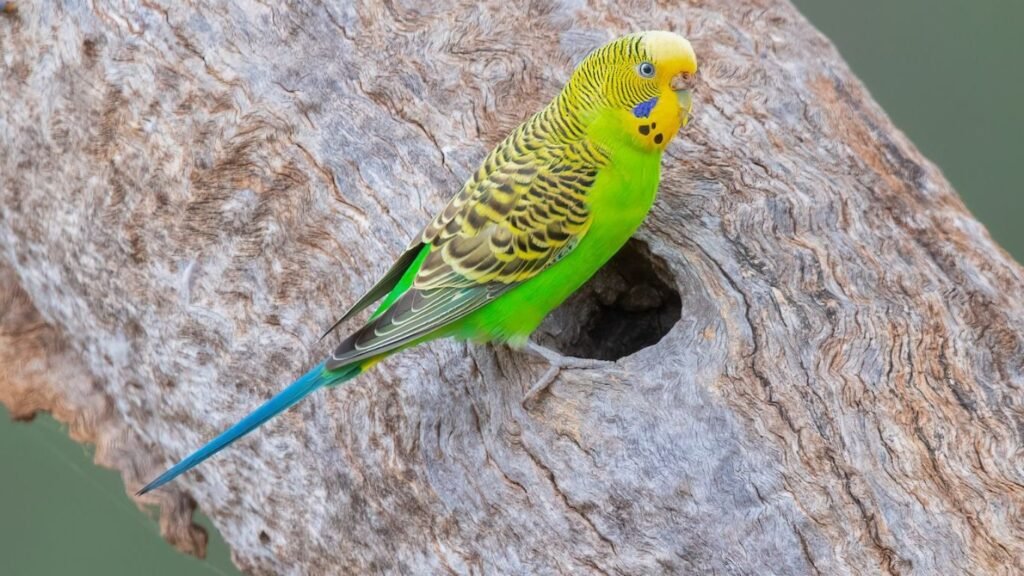
Health and Well-being
Proper care is key for happy, healthy budgies. Good diet, hygiene, and awareness of common health issues help budgies thrive. Regular vet checkups catch problems early.
Common Health Issues
Budgies can face several health problems. Respiratory infections are common, with symptoms like wheezing or tail bobbing. Mites cause itching and feather loss. Overgrown beaks and nails need trimming.
Egg binding in females is serious. Watch for straining or lethargy. Seek vet help fast.
Tumors may develop, especially in older birds. Look for lumps or bumps.
Stress can lower immunity. Provide a calm environment.
Regular health checks help spot issues early. Know your bird’s normal behavior to notice changes quickly.
Diet and Nutrition
A balanced diet keeps budgies healthy. Offer a mix of:
- High-quality seed mix (20-30% of diet)
- Fresh fruits and vegetables (20-30%)
- Pellets (40-50%)
Safe fruits: apples, berries, melons
Safe veggies: carrots, leafy greens, squash
Avoid avocado, chocolate, and caffeine. They’re toxic to birds.
Give fresh water daily. Clean food and water dishes often.
Cuttlebone provides calcium. Offer mineral blocks for extra nutrients.
Breeding birds need extra protein and calcium. Boiled eggs or commercial egg food work well.
Hygiene Practices
Clean cages weekly. Use bird-safe disinfectants.
Provide shallow dishes for bathing. Many budgies enjoy mist baths too.
Trim nails and beaks as needed. Ask a vet to show you how.
Replace perches and toys regularly. Check for wear and tear.
Keep the room clean. Vacuum or sweep often to reduce dust.
Wash hands before and after handling birds. This prevents spreading germs.
Monitor droppings. Changes can signal health issues.
Maintain good air quality. Avoid strong fumes or smoke near birds.
Genetics and Breeding Ethics
Breeding budgerigars involves important genetic and ethical considerations. Breeders must balance producing desired traits with maintaining bird health and welfare.
Genetic Considerations
Budgerigars have 26 chromosomes that contain their genetic code. These genes control traits like color, pattern, and size. Some traits are dominant, while others are recessive. Dominant traits show up even if a bird has only one copy of the gene. Recessive traits need two copies to appear.
Common color mutations in budgies include blue and lutino. Blue is recessive, so both parents must carry the gene to produce blue offspring. Lutino removes melanin, creating yellow birds with red eyes.
Breeders use genetic knowledge to predict offspring traits. They can pair birds to produce specific colors or patterns. But they must be careful not to create health issues through inbreeding.
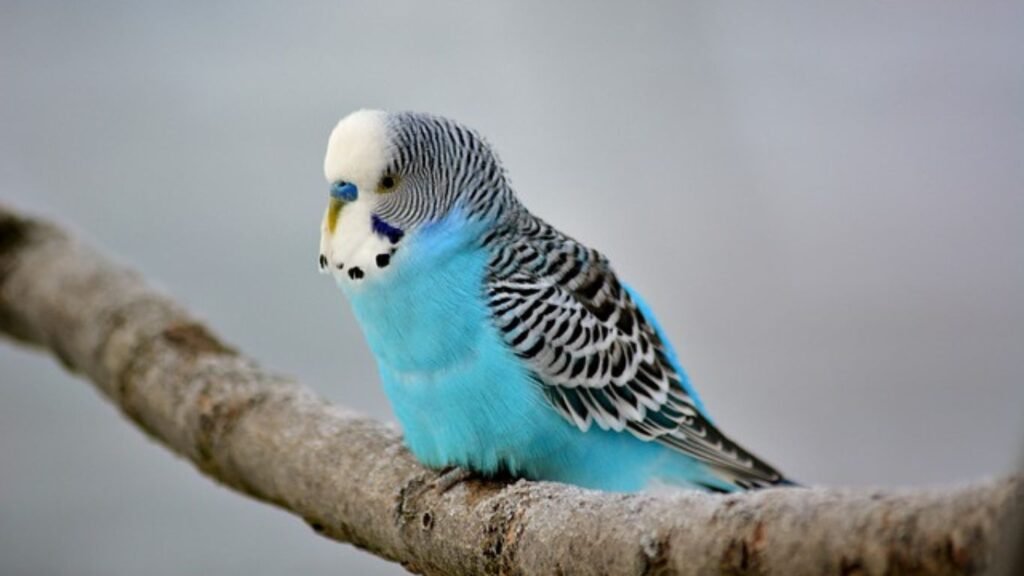
Ethical Breeding Practices
Responsible breeders put bird health first. They avoid breeding closely related birds to prevent genetic defects. Good breeders also limit how often females produce chicks to protect their health.
Breeding for extreme traits can harm birds. For example, breeding for very large birds may cause health problems. Ethical breeders focus on birds that meet breed standards without going to extremes.
Proper care is key. Breeding birds need nutritious food, clean housing, and vet care. Breeders should socialize chicks and find good homes for offspring. They must also keep detailed records of breeding pairs and offspring.
Ethical breeders educate buyers about budgie care. They screen potential owners to ensure birds go to good homes. Some join clubs or societies that promote responsible breeding practices.
Record Keeping and Monitoring
Good record keeping and monitoring are key for successful budgerigar breeding. They help track bird health, genetics, and breeding outcomes. Careful records allow breeders to make smart choices and spot trends.
Breeding Records
Breeders should keep detailed records of each bird’s family tree. This helps track good traits and avoid inbreeding. Write down the parents, grandparents, and great-grandparents of each bird. Note special features, colors, and any health issues.
Keep a log of breeding pairs and their results. Record:
- Nest box number
- Egg laying dates
- Hatch dates
- Number of chicks
- Chick band numbers
Use a simple spreadsheet or breeding software to organize data. Update records after each breeding season.
Monitoring and Tracking Development
Watch chicks closely as they grow. Check their weight gain and feather growth often. Keep notes on:
- Daily weight
- When pin feathers appear
- First day out of the nest
- Weaning date
Take photos of chicks at different ages. This helps track their progress over time. Look for any signs of illness or slow growth. Act fast if you see problems.
Monitor adult birds too. Keep records of:
- Yearly health checks
- Molt patterns
- Changes in behavior
- Show results
Regular checks help catch issues early. Good records make it easier to spot patterns and improve breeding results over time.
